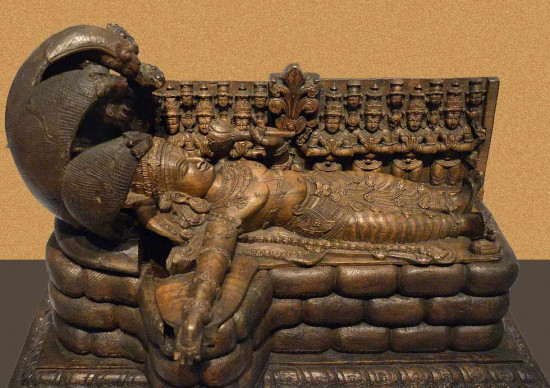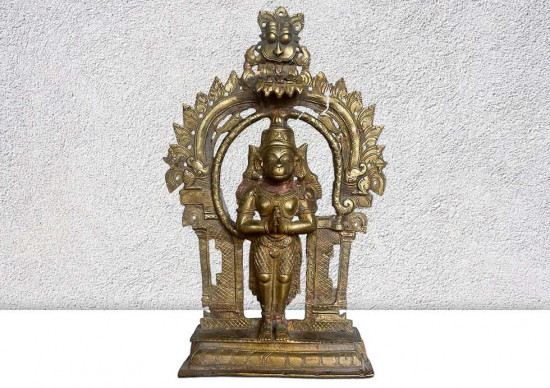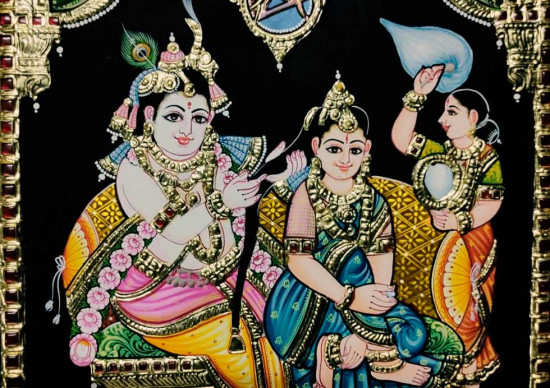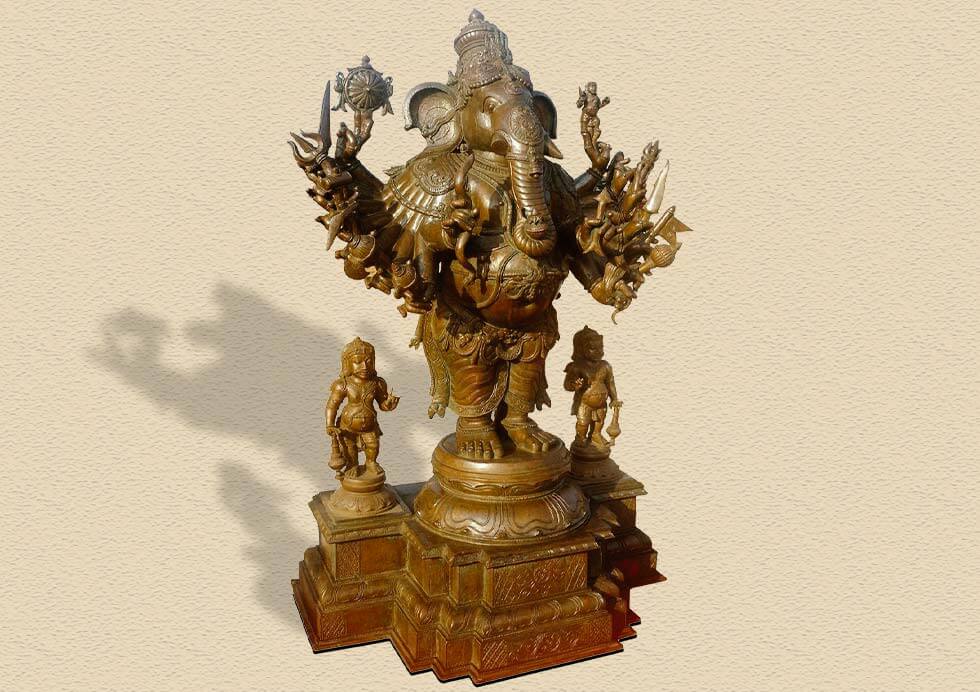
In the vast and diverse pantheon of Hindu deities, Lord Ganesha, the Elephant-headed God, stands out as a beloved figure representing wisdom, knowledge, and prosperity. Known for his gentle and jovial nature, Ganesha is typically celebrated for his role as the remover of obstacles and a harbinger of success. However, there is a lesser-known, yet profoundly significant form of this deity—Veera Ganapati. This formidable and awe-inspiring manifestation of Ganesha is one of the 32 revered forms of Lord Ganesha, embodying the spirit of a valiant warrior and bringing a unique dimension to his divine presence.
Veera Ganapati: The Valiant Warrior Form
Veera Ganapati, also referred to as Vira Ganapati, presents a powerful and fierce aspect of Lord Ganesha. Unlike the more familiar Ganesh statues, Veera Ganapati assumes a commanding and martial posture, exuding an aura of strength and valor. Characterized by his sixteen arms, each holding a different weapon or symbol of mental prowess, this Ganesh statue represents both physical and intellectual strength. His dynamic appearance and the array of weapons he wields reflect his role as a divine protector and champion.
A Divine Duel and the Rise of a Valiant Form

In the Ganesh Purana, there's a story about how Lord Ganesha took the form of Veera Ganapati, a fierce and powerful incarnation. In this form, he defeated a mighty demon and made him his own vehicle, or mount. The demon, who was a mouse, was transformed by Ganesha’s power and became his eternal vahana.
The story started with a celestial musician named Krauncha who worshipped Devi Tripurasundari, the Supreme Divine Mother. He was a devotee of maa Tripurasundari. Devi took him to her realm and gave him many blessings but Karuncha was greedy and he asked for immortality. But mother denied it because he didn’t deserve it yet. She then went into deep meditation.
Krauncha knew that one of Devi’s pots held “Amritam”, a nectar that grants immortality. He turned into a mouse, climbed the pot, and drank some of the nectar. Devi was angered by this and cursed him to be a mouse with the mind of a demon.
However, when Krauncha sincerely regretted his actions and praised Devi, she calmed down and blessed him with a very special future. After that Karuncha returned back to his place.
But as his fate is already decided, Krauncha accidentally stepped on sage Vaamadeva’s foot at Indra’s court. The sage also cursed Krauncha to become a mouse. But Krauncha apologized and begged sage Vaamadeva to take back the curse.
Although the sage Vaamadeva couldn't lift his own curse, he also blessed Krauncha with a future where he would be revered by the gods.
Because of sage Vaamadeva’s curse, Krauncha turned into a giant demon-mouse named Mushikasura. Being immortal from the nectar, he began causing chaos in the world with his power.
The story started with a celestial musician named Krauncha who worshipped Devi Tripurasundari, the Supreme Divine Mother. He was a devotee of maa Tripurasundari. Devi took him to her realm and gave him many blessings but Karuncha was greedy and he asked for immortality. But mother denied it because he didn’t deserve it yet. She then went into deep meditation.
Krauncha knew that one of Devi’s pots held “Amritam”, a nectar that grants immortality. He turned into a mouse, climbed the pot, and drank some of the nectar. Devi was angered by this and cursed him to be a mouse with the mind of a demon.
However, when Krauncha sincerely regretted his actions and praised Devi, she calmed down and blessed him with a very special future. After that Karuncha returned back to his place.
But as his fate is already decided, Krauncha accidentally stepped on sage Vaamadeva’s foot at Indra’s court. The sage also cursed Krauncha to become a mouse. But Krauncha apologized and begged sage Vaamadeva to take back the curse.
Although the sage Vaamadeva couldn't lift his own curse, he also blessed Krauncha with a future where he would be revered by the gods.
Because of sage Vaamadeva’s curse, Krauncha turned into a giant demon-mouse named Mushikasura. Being immortal from the nectar, he began causing chaos in the world with his power.
One day, Mushikasura threatened the ashrama of sage Parashara. He caused widespread destruction by ruining farms and attacking cattle. At that time, Lord Ganesha was staying in the ashrama.
Lord Ganesha fought with Mushikasura in his Veera Ganapati form, broke his own tusk, and threw it at him.
Although Mushikasura couldn’t die because of his immortality, Ganesha’s tusk caused him great pain and chased him wherever he went. Eventually, Mushikasura surrendered to Lord Ganesha, who then blessed him to serve as his eternal vahana.
The story of Lord Ganesha's form as Veera Ganapati and his battle with Mushikasura is primarily found in the "Ganesha Purana".
Lord Ganesha fought with Mushikasura in his Veera Ganapati form, broke his own tusk, and threw it at him.
Although Mushikasura couldn’t die because of his immortality, Ganesha’s tusk caused him great pain and chased him wherever he went. Eventually, Mushikasura surrendered to Lord Ganesha, who then blessed him to serve as his eternal vahana.
In his depiction Lord Ganesha is often shown alongside Mushak Raj, symbolizing the divine transformation of the once-demon mouse into Ganesha’s steadfast vahana.
The story of Lord Ganesha's form as Veera Ganapati and his battle with Mushikasura is primarily found in the "Ganesha Purana".
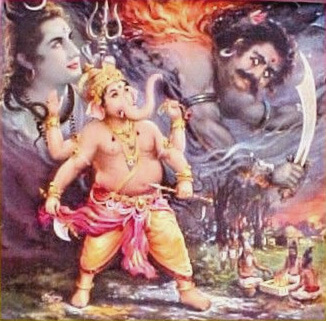
Veeraganapati fighting Mushikasura
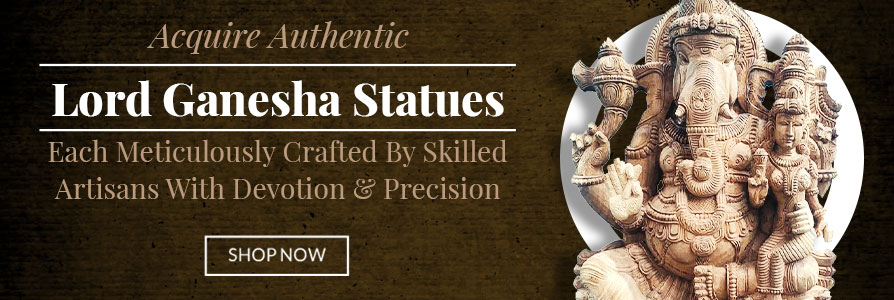
The Symbolism of Veera Ganapati
Veera Ganapati’s formidable appearance and martial attributes carry deep symbolism. This form of Ganesha reminds us that courage, determination, and a warrior spirit are essential qualities for overcoming life’s adversities. The sixteen arms emphasize mastering the mind, which is often described as a battlefield in Hindu philosophy. Each weapon symbolizes a tool for conquering negative tendencies, distractions, and inner conflicts, thus helping individuals achieve clarity, focus, and self-mastery.
Worship and Devotion to Veera Ganapati
Devotees seeking strength and courage might turn to Veera Ganapati for his powerful blessings. Worship of this valiant form is believed to provide protection and guidance during times of adversity. His martial prowess and intellectual acumen make him a source of inspiration for overcoming challenges in various aspects of life. Veera Ganapati is often worshiped with his consort, Vira Ganapati Maha Shakti, representing a harmonious balance between strength and grace.
During worship devotees offer prayers, flowers, incense, and sweets to seek Lord Ganesha’s blessings for courage and success. The mantra for Veera Ganapati, recited with faith, is a powerful tool for invoking his divine grace.

Mushikasura becomes Dinkamurti
Veera Ganapati or Vira Ganapati Mantra
Veera Sakthi Shara Karumukha Chakra Kanga
Khadanga, Mudgara Gadaakusha Nagapasham
Shoolam Cha Kunta Parashu, Dhvajakudhvahantham
Veeram Ganeshamarunam, Satatam Smaraami
Veera Ganapati in Art and Iconography
Artists and sculptors portray Lord Ganesha statue as Veera Ganapati with great attention to detail, emphasizing his martial demeanor and the variety of weapons he wields. His radiant form, adorned with various ornaments and symbols, conveys a sense of divine power and authority. Visual representations of Veera Ganapati inspire devotees and serve as a reminder of the inner strength that lies within each individual.
The Martial Demeanor
In artistic representations, Veera Ganapati is portrayed with a commanding and regal stance. Unlike the more familiar, gentle forms of Ganesha, this version exudes a powerful aura that emphasizes his role as a valiant warrior. He is often depicted standing or seated in a dynamic pose that conveys readiness for action, reflecting his role as a protector and champion. His posture and expression are designed to inspire awe and convey a sense of unwavering strength and authority.
The Array of Weapons
One of the most striking features of Veera Ganapati’s iconography is his sixteen arms, each holding a different weapon or symbol. These weapons are meticulously detailed and each carries its own symbolism:
In His Right Hands he holds:
- Chakra (Disc): Represents divine power and cosmic order.
- Khadga (Sword): Symbolizes the power to cut through ignorance.
- Trishula (Trident): Signifies control over the three aspects of creation, preservation, and destruction.
- Mudgara (Hammer) Denotes strength and the ability to crush obstacles.
- Hala (Plough): Represents the cultivation of righteousness and spiritual growth.
- Parashu (Axe): Symbolizes the removal of obstacles and the cutting through of illusions.
- Ankusha (Goad): Indicates control and guidance over cosmic forces.
- Chaapa (Bow): Embodies focus and precision in achieving goals.
In His Left Hands he holds:
- Vetaala (Goblin): Reflects mastery over the mind and mental challenges.
- Khetaka (Shield): Represents protection and defense against negativity.
- Vajra (Thunderbolt): Signifies divine power and the ability to destroy ignorance.
- Churi (Dagger): Symbolizes the cutting through of deceit and falsehood.
- Dhwaja (Banner): Denotes divine victory and the standard of righteousness.
- Gada (Mace): Represents strength and authority in upholding dharma.
- Sarpa (Snake): Embodies wisdom and the divine energy within.
- Bana (Arrow): Signifies directed energy and precision in action.
Each weapon is not only a tool of power but also a symbol of the various aspects of mental and spiritual strength. The detailed craftsmanship of these weapons reflects the artist’s intent to convey their significance and utility in overcoming life's challenges.
Radiant Form and Ornaments

Veera Ganapati’s form is often depicted with a radiant and resplendent quality. His body is adorned with various ornaments, including crowns, necklaces, and armlets, which enhance his divine and majestic appearance. These ornaments are intricately designed and symbolize his elevated status and divine authority. The use of vibrant colors and detailed textures in these adornments adds to the overall impact of his representation, making him appear both majestic and formidable.
Symbolic Imagery
Artists infuse Veera Ganapati’s imagery with a range of symbolic elements that emphasize his role as a protector and warrior. The backdrop of his depictions may include elements like flames or thunderbolts, which symbolize his power and the energy of his divine presence. His facial expression often reflects a sense of determination and strength, inspiring devotees to embody these qualities in their own lives.
Inspirational Impact
The visual representations of Veera Ganapati serve as powerful reminders of the inner strength and resilience that lie within each individual. Devotees are inspired by his martial demeanor and the intricate details of his iconography, finding encouragement to confront their own challenges with courage and determination. The art and sculptures of Veera Ganapati are not merely decorative; they are imbued with spiritual significance and serve as a focal point for meditation and worship.
The Temple of Veera Ganapati: A Sacred Shrine of Strength and Valor

The Veera Ganapati Temple, prominently located in Thiruvananthapuram, Kerala, is a sacred site dedicated to Lord Ganesha in his fierce and protective Veera Ganapati form. This temple showcases Lord Ganesha with sixteen arms, each holding a distinct weapon symbolizing his martial prowess and divine authority. The architecture of the temple reflects traditional South Indian design, with intricate carvings and vibrant murals highlighting the deity's power. Devotees flock to this temple to seek blessings of strength and courage, especially during festivals like Ganesh Chaturthi. The temple’s rituals and ceremonies, which include elaborate pujas and recitations of hymns, reinforce its role as a spiritual haven where worshippers can connect with the mighty and valiant aspect of Lord Ganesha.
Conclusion
Veera Ganapati stands as a profound embodiment of Lord Ganesha's multifaceted nature, illustrating the deity's role beyond the familiar aspects of wisdom and prosperity. As a form characterized by valor and martial prowess, Veera Ganapati showcases the power of strength, courage, and protection. His sixteenth-armed depiction, each hand holding a symbol of divine authority, encapsulates a range of attributes crucial for overcoming life's challenges and adversities. The mythological narrative of his battle with Mushikasura not only highlights his transformative power but also underscores the importance of repentance and divine grace. Worshiping Veera Ganapati, particularly in the sacred space of the Thiruvananthapuram temple, offers devotees a unique opportunity to seek his blessings for bravery and resilience. This form of Ganesha, with its rich symbolism and dynamic representation, serves as a compelling reminder of the inner strength and determination required to navigate the complexities of life. Through both historical context and modern devotion, Veera Ganapati remains a source of inspiration and a symbol of divine protection for all who seek it.



